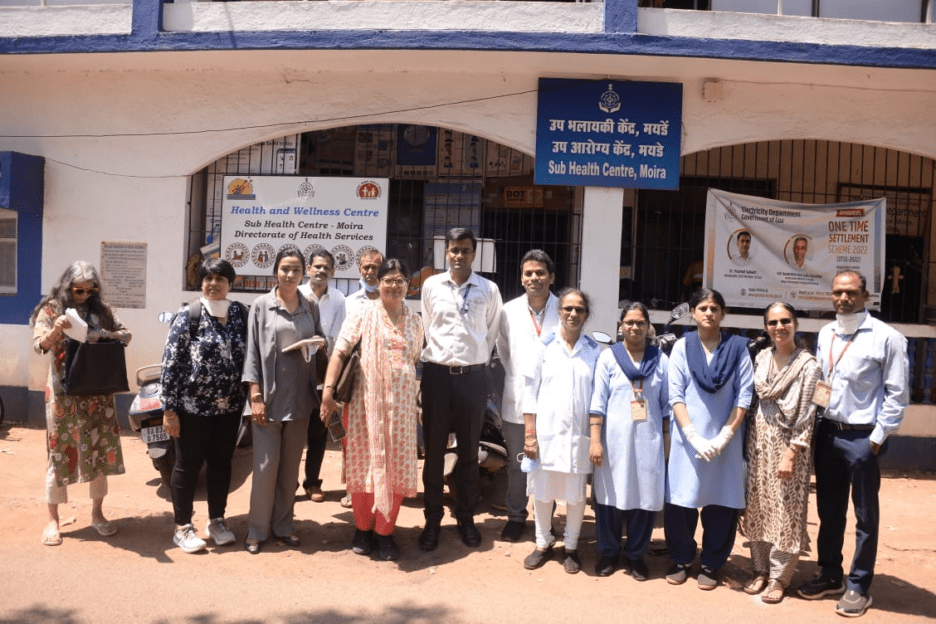Ahead of the second G20 Health Working Group Meeting scheduled to take place in Goa from April 17-19, 2023, the Union Ministry of Health and Family Welfare, in partnership with the Directorate of Health Services, Government of Goa, organized an exclusive tour of the Primary Health Care Centre in Aldona. Goa’s achievements in immunization and the implementation of the STEMI project were presented to the media delegation comprising representatives from both national and local media.
STEMI – Goa project was launched by the Government of Goa in collaboration with Tricog Health Services, Pvt. Ltd. Bengaluru with an aim to reduce premature mortality from non-communicable diseases by one-third by adopting advanced health practices and modern technology.
ST Elevation Myocardial Infarction (STEMI) is a type of heart attack that happens when the blood flow to a part of the heart is blocked. Under the project, a hub and spoke model has been put in place where any Tertiary care hospital with Cath lab facilities acts as a hub while public health facilities identified under the STEMI Project to stabilize the patient before referral are spokes. Every spoke is equipped with a Tricog ECG machine linked to a Tele-ECG facility and CardioNet App which connects the data to a team of cardiologists in Bengaluru. This ensures that ECG reports are generated in under 5 minutes. The project also has for provisions for a cardiac ambulance, for patient referral from spoke to the HUB if required, with live tracking of patient transfer enabled.
With this model average time for treatment of a heart attack patient is reduced and brought closer to the ‘golden hour’ of 90 minutes, saving countless lives. The project was initially started with one government Hub and 12 existing peripheral government hospitals being the spokes, and has now expanded to 4 Hubs and 20 spokes.
The immunization program implemented by the state government was also showcased, at the Moira Sub Centre of the Aldona PHC. The system is an excellent example of a well-organized and effective use of technology to ensure that every child is immunized in a timely. Under the model, following the birth of a baby, digital and print records are maintained to keep track of their immunization schedule. The parents of the child are reminded of the upcoming doses through phone calls. If the parents are out of town, they are advised to visit the nearest health center to receive the vaccine or are given the dose on their arrival at the health center.
Dr. Mangesh, Health Officer, UNICEF highlighted the importance of Immunization services by noting how they act as a bridge in connecting health facilities and communities. He added that Immunization outreach activities can contribute to strengthening Primary Health Care services even in rural villages and urban slums that face barriers in accessing health care services. He stated that UNICEF supports the Government of India’s immunization programs, in reaching missed/drop-out children toward achieving Universal Health Coverage (UHC) and accelerating Sustainable Development Goals focused on Health

